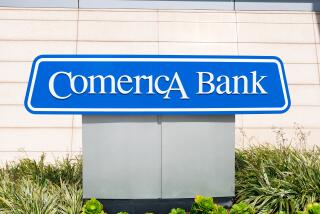S&Ls; Report Record Losses of $12.1 Billion
- Share via
WASHINGTON — The battered savings-and-loan industry lost a post-Depression record $12.1 billion last year and is facing a continued drain in 1989 from rising interest rates, the government said today.
The Federal Home Loan Bank Board said the nation’s 2,949 S&Ls; lost $2.3 billion in the fourth quarter, pushing red ink for the year well past the previous record of $7.8 billion set in 1987.
The bank board said the heaviest losses continue to be concentrated in just a few institutions, with the 20 most troubled institutions losing $2 billion in the fourth quarter.
For the year, the 12% of the industry that is insolvent lost $14.8 billion, more than swamping the $2.7 billion earned by solvent institutions.
Fewer Insolvent Institutions
The agency also said the number of insolvent institutions at year-end declined for the first time in the decade from 520 at the end of 1987 to 364 at the end of 1988. That was the result of another post-Depression record of 223 S&L; closings and government-assisted mergers.
James Barth, chief economist of the bank board, said rising interest rates in 1989 would be “obviously adverse, not good.”
“Operating income should be lower across the board for all thrifts in the first and second quarters,” Barth said.
Much of 1988’s red ink was old in the sense that institutions finally got around to recognizing bad loans that had long ago gone sour.
Analysts are divided over how many more loan losses remain hidden in failed, but still open, institutions. But they are unanimous that it will be tougher than last year for the profitable segment of the industry to make a dollar.
‘Not as Easy as Last Year’
“We may see less of a problem in the actual numbers for 1989 because . . . some of the writedowns should have run their course,” said economist Martin Regalia of the National Council of Savings Institutions. “But for the profitable two-thirds of the industry . . . it’s not going to be as easy as last year and last year wasn’t all that easy.”
The problem is interest rates. Savings and loans make their money by borrowing short term, from depositors, and lending long term, for mortgages and other purposes. When rates follow the normal pattern--high long rates and low short rates, institutions earn more on loans than they pay to depositors.
But currently short-term rates approach and in some cases surpass long-term rates, severely cutting into profitable thrifts’ earnings.
Some S&Ls; have coped by offering adjustable-rate mortgages, but the industry as a whole is still vulnerable to rate swings. And, most economists believe that the Federal Reserve Board, faced with a series of negative inflation reports, will continue to push short-term rates--up 3 percentage points over the last year--still higher.
More to Read
Inside the business of entertainment
The Wide Shot brings you news, analysis and insights on everything from streaming wars to production — and what it all means for the future.
You may occasionally receive promotional content from the Los Angeles Times.










